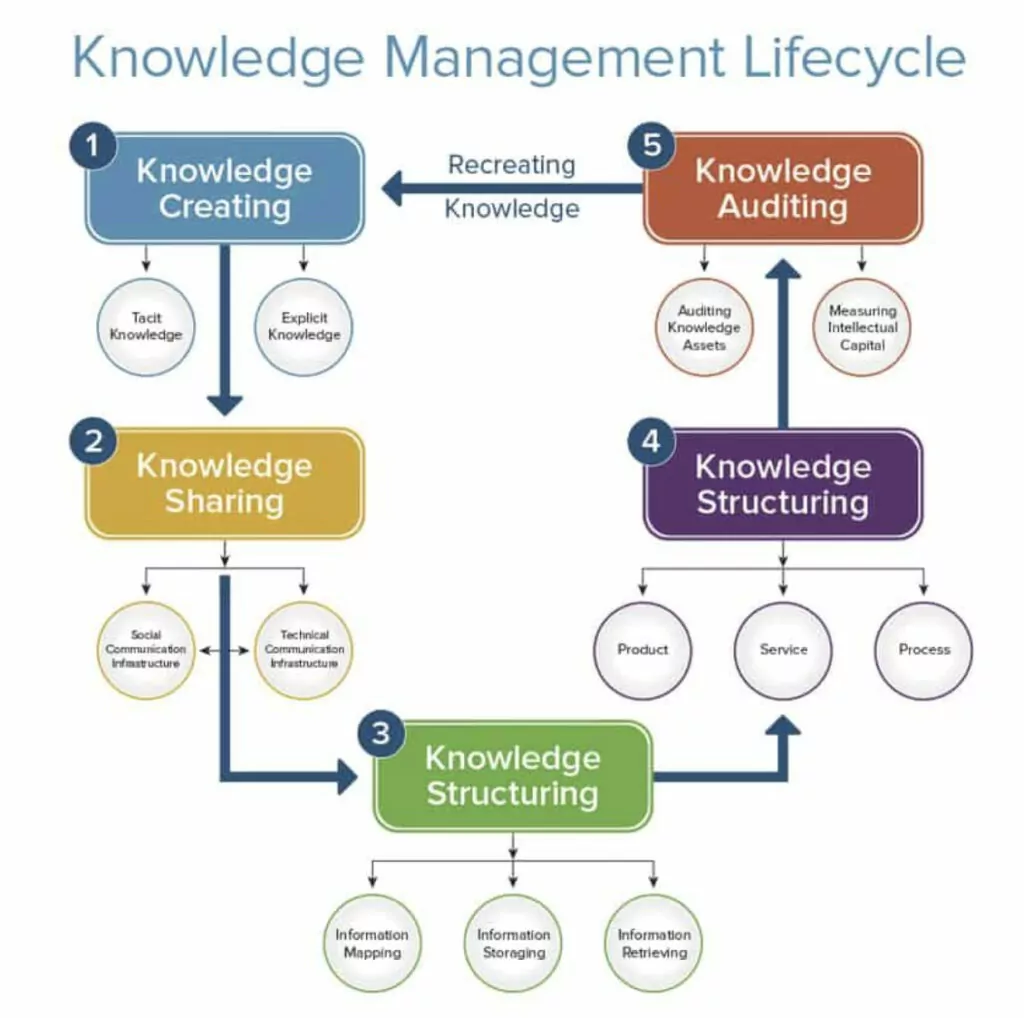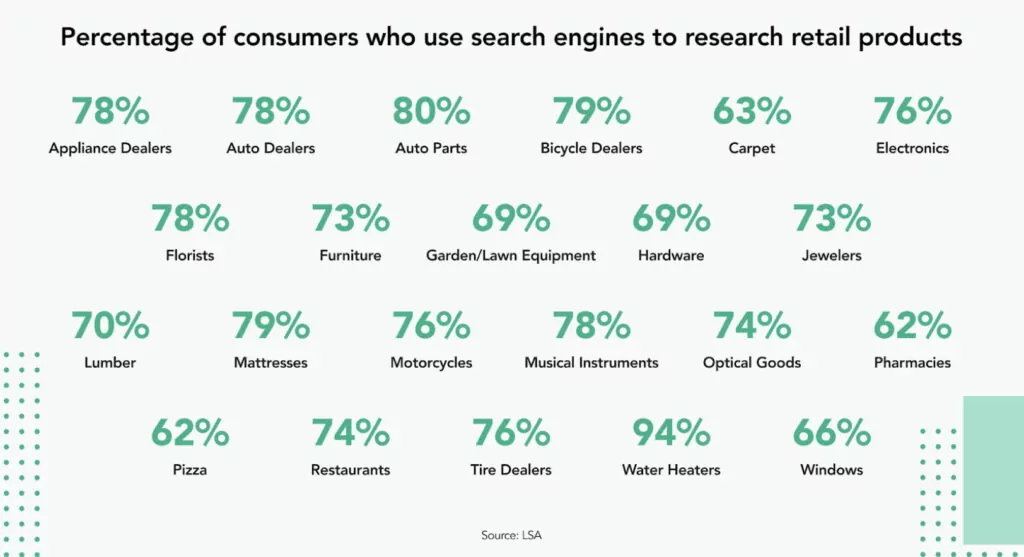All the knowledge your customers need to make an informed sales decision exists. However, it isn’t always very accessible. That knowledge might be stored in an extensive database or is only known to a handful of sales agents. Information is useless unless those that need it can access it. Therefore, you need to use a knowledge management system in your sales strategy for organizing and dispersing essential knowledge to your customers and sales agents.
Explore what a knowledge management system is and how to use it in your sales department.
Key Takeaways:
- Knowledge management systems organize information that you can apply to real situations
- Knowledge is categorized as facts, experience, and intuitive knowledge
- Use your knowledge management system to provide more information to your customers and answer their questions
- Your knowledge management system helps you train your sales representatives to provide better support
What Is Knowledge Management?
Knowledge management is the organization and dispersion of information within and without a company. You perform knowledge management through a knowledge management system, which can include several different tools that perform management tasks.
For example, as new information and knowledge come into the system, your tool organizes it into an easily managed structure for mapping, storing, and retrieving. You pull from that data to:
- Answer questions about products
- Provide training
- Share details on products and services
Some formats of knowledge structuring include:
- Frequently asked questions pages
- Auto responses to customer inquiries
- Instruction manuals
- Training videos or booklets
Source: Smartsheet
Information Management vs. Data Management vs. Knowledge Management
Data is vital for marketing and sales, which is why you need several tools to help you gather and store information. Two similar terms to knowledge management are information management and data management.
Information Management
Information management is the closest concept to knowledge management and has several overlapping uses. When data has context, it becomes information. For instance, when someone fills in a contact form when purchasing a product, those details are considered information.
Your information management tool stores those details for you to use in their context. For instance, the previous contact information is stored with the billing department.
Data Management
Data management works directly with data sources. It’s a tool that collects details about people, transactions, and products. Then, the tool stores that customer data for processing, which you retrieve in the form of reports.
Knowledge Management
Knowledge management is broader than information management. While information management collects facts and data in a specific context, knowledge management looks at the application of data, especially for learning and training purposes.
One of the most important distinctions is that information management puts the company at the center as the data you collect is used in company processes. However, knowledge management keeps the customer at the center as you use your data to improve the customer experience.
Types of Knowledge Management Systems
There are three primary categories of knowledge that your systems will track, manage, and disperse:
Explicit Knowledge
Explicit knowledge is the easiest type of data to understand because it’s proven, documented, and shareable. For example, a knowledge management system would use explicit knowledge to create product and feature pages, frequently asked question pages, and informative content.
Implicit Knowledge
Implicit knowledge is more abstract knowledge but still easy to understand. It includes concepts and information that people learn from experience but don’t have structure.
For example, implicit knowledge is information gained from performing tasks. Like if you follow product instructions, implicit knowledge tells you the results. In marketing, you might share implicit knowledge through product demos or customer support calls.
Tacit Knowledge
Tacit knowledge is the most difficult to collect, understand, and share because it’s a vague concept that relies on intuition. For example, tacit knowledge might be understanding specific jargon in your industry or interpreting body language.
Tactic knowledge isn’t something you can easily teach. Instead, it’s something people pick up instinctively. One example of sharing tactic knowledge is documents that outline proper etiquette for events, like muting your microphone when on a Zoom call.
5 Ways to Use a Knowledge Management System in Sales
Use these five tips to use knowledge management systems in your sales and marketing strategies.
1. Sort Your Information and Organize Your System
You have an endless supply of information and knowledge you can use in your knowledge management systems. However, if you tried to incorporate everything, you would overwhelm your teams and customers.
Instead, focus on the most important and relevant details and clearly convey the information customers need when making purchasing decisions.
For example, while you might receive hundreds of customer questions. However, you should narrow those down to a couple dozen of the most commonly asked questions and publish them on your website. Then future customers can find answers easier.
2. Provide Easily Accessible Knowledge for Your Customers
About 81% of consumers research products online before making a purchase decision. They turn to online content like blog posts, frequently asked questions, and product description pages to find answers and compare options.
Source: INVOCA
You can use your knowledge management system to address customers’ pain points and offer solutions for your customers’ needs.
3. Streamline the Sales Process
About 60% of consumers prefer using automated customer service for completing simple tasks rather than calling a live representative. For example, automated customer service might be chatbots or guided customer service menus.
In addition, over half of the consumers say they need to call a live representative for help because the company didn’t provide enough online information.
You can improve your customer care and streamline the sales process by offering more information online for customers to find themselves through online content and sales automation services. This saves them time since they don’t have to call a representative and helps the sales process go faster.
4. Train Your Employees to Provide Better Service
About 55% of sales agents don’t have the necessary skills to perform well. If you provide comprehensive sales training, you can improve each agent’s performance by at least 20%.
Your knowledge management system will improve your sales by equipping your sales team with the necessary knowledge and processes to convert leads.
5. Keep Your Knowledge Management System Updated
Data is constantly changing especially tacit knowledge. What was acceptable and common knowledge last year might not be relevant today.
For example, etiquette for performing remote sales over Zoom is vastly different than in-person sales.
By constantly updating your knowledge management systems, you ensure your customers have the most relevant information.
Improve Your Sales with a Knowledge Management System
Improve your lead nurturing process by adding a knowledge management system into your strategy. Your system will collect and disperse the right information at the right time to help lead your prospects through the sales cycle.
Schedule a demo to learn more about our lead management and conversion solutions.
Feature Image: istockphoto









